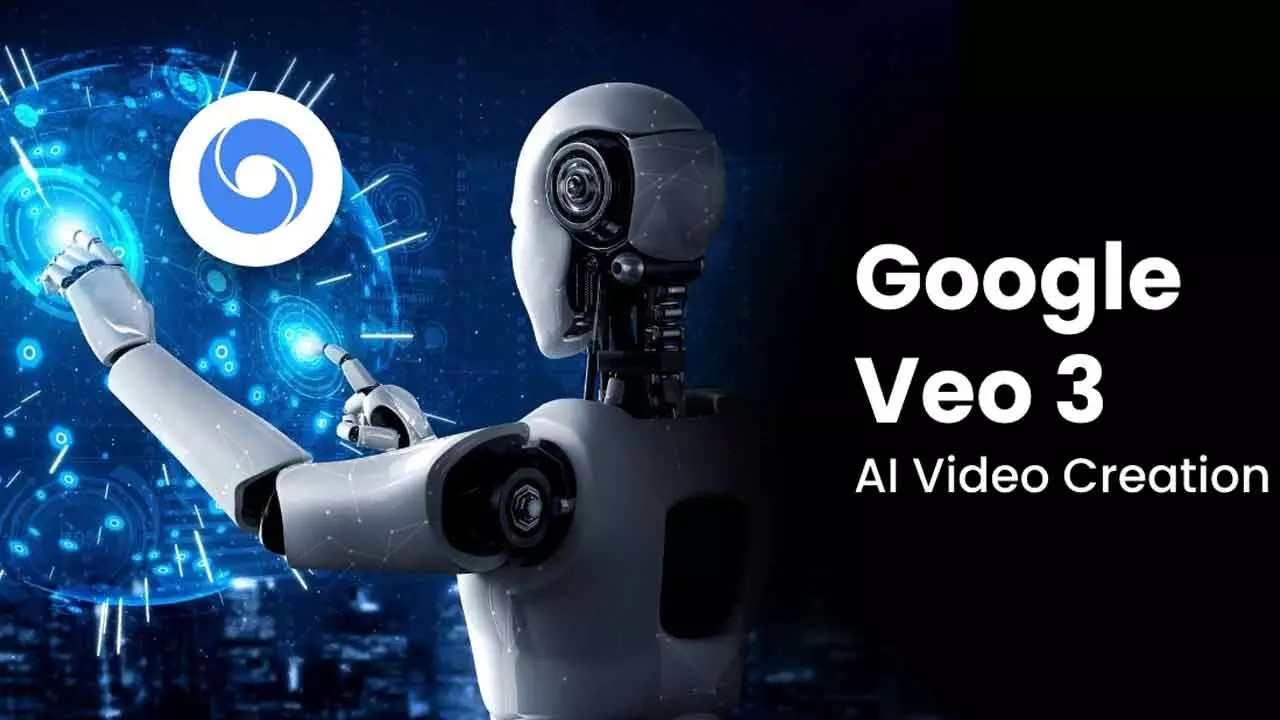Google Unlocks Next-Gen AI Video Creation in the Middle East with Veo 3
Google's advanced AI video model, Veo 3, is now available to Gemini users in the Middle East. Generate cinematic videos with sound and realistic visuals from text prompts, rivaling OpenAI's Sora
Google Unlocks Next-Gen AI Video Creation in the Middle East with Veo 3

Google has officially launched Veo 3, its most advanced AI-powered video creation model, to Gemini users across the Middle East. This significant expansion brings the cutting-edge generative media technology to a region poised for digital innovation, allowing paying subscribers to transform simple text prompts into cinematic video clips complete with synchronized sound, music, dialogue, and stunningly realistic visuals.
From Concept to Cinematic Reality: The Power of Veo 3
First unveiled at Google I/O 2024, the company's annual developer conference in May, Veo 3 has quickly garnered attention for its exceptional realism, sophisticated physics simulation, and highly accurate lip-syncing capabilities.
"From prompt to production, Veo 3 delivers best-in-class realism, physics, and lip syncing," stated Eli Collins, Vice President of Product at Google DeepMind, during its initial launch.
Users can now simply describe a scene, such as "a bustling street market in Marrakech at dusk with vibrant lanterns and the smell of spices," and Veo 3 will generate an eight-second, 720p video. This output seamlessly integrates ambient sound, spoken dialogue, realistic effects, and visual elements that closely mirror the input description, bringing creative visions to life with unprecedented ease.
According to Collins, Veo 3 goes beyond standard text-to-video generation by also supporting image prompting and setting a new benchmark in responsive AI video design. In a recent blog post, he underscored the model's strengths: "Veo 3 excels from text and image prompting to real-world physics and accurate lip syncing," highlighting its prowess in realism, responsiveness, and user control.
Challenging the Generative Video Landscape
With its groundbreaking ability to generate native audio – including background noise, soundtracks, and even voiceovers – Veo 3 firmly positions itself as a direct competitor to OpenAI's Sora, both vying for dominance in the rapidly evolving generative video space.
What truly distinguishes Veo 3 is its combination of multi-modal generation (text, image, and sound) and its physics-aware rendering. This allows it to craft scenes that feel incredibly lifelike and cinematic, making it a versatile tool for a wide range of applications, whether it's for a dreamlike short film, a conceptual product visualization, or even the creation of viral memes. A notable example that recently swept social media was an AI-generated, surreal clip of Will Smith eating spaghetti, captivating audiences across platforms like X (formerly Twitter).
Ensuring Authenticity: Google's Commitment to Transparency
In an era increasingly grappling with the risks of deepfakes and synthetic media, Google is prioritizing content authenticity. All videos generated by Veo 3 come embedded with a SynthID watermark, Google’s invisible digital signature designed to label AI-generated content. This innovative feature helps in tracing and verifying the origin of synthetic media.
Furthermore, in addition to this hidden watermark, Veo-generated videos will also feature a visible watermark, clearly indicating their AI-generated nature. The only exception will be content created by Ultra-tier members utilizing Google's new Flow filmmaking platform. To further empower users and platforms in identifying synthetic media, Google is also actively testing a SynthID Detector tool, with plans to expand its accessibility soon.
Empowering Regional Creators
Having already debuted in other international markets earlier this year, Veo 3's launch in the Middle East opens up exciting new possibilities for regional creators, filmmakers, marketers, and digital storytellers. It provides access to high-end AI video creation without the traditional barriers of expensive equipment or complex editing processes. This rollout is a key part of Google's broader strategy to seamlessly integrate generative AI into everyday creative workflows, particularly through its Gemini platform, which continues to gain significant traction among both professionals and hobbyists worldwide.

